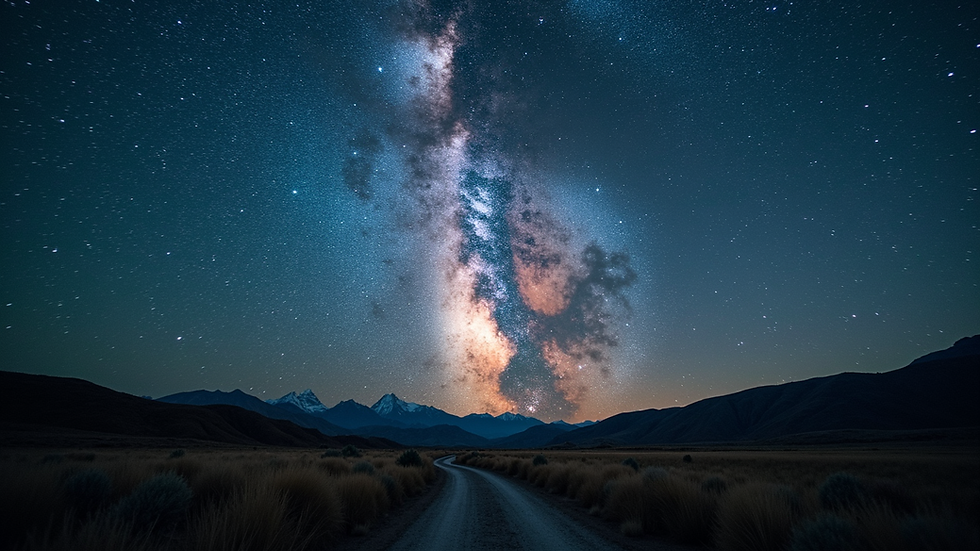AI Sheds Light on Uncharted Stars in Latest Milky Way Map Update
- April C.

- 1 day ago
- 4 min read
From the moment humans looked up at the night sky, the universe has ignited a thirst for knowledge. The Milky Way, as our home galaxy, has captivated countless generations. Thanks to recent advancements in artificial intelligence, we are making exciting discoveries that enhance our understanding of this vast expanse. This blog post explores the latest findings from an AI-driven Milky Way map that has unveiled previously hidden stars, reshaping our view of our cosmic neighborhood.
Understanding the Milky Way Mapping Initiative
Mapping the Milky Way is a transformative undertaking that has traditionally relied on extensive astronomical surveys. Astronomers have long gathered a wealth of data about the stars and other celestial bodies that populate our galaxy. However, the process of analyzing this data manually is both labor-intensive and time-consuming.
Artificial intelligence has emerged as a powerful ally in this endeavor. By quickly processing enormous datasets, AI helps astronomers recognize patterns and anomalies in stellar data. This leap in technology allows for the identification of stars that might have eluded human discovery.
Collaborative efforts among space agencies and research institutions have resulted in the latest Milky Way map update. This fresh perspective reveals thousands of uncharted stars, showcasing how AI contributes to astronomical progress. But how exactly does AI facilitate such significant advancements?
The Role of AI in Star Discovery
AI utilizes machine learning techniques to analyze astronomical data effectively. These models are trained on existing datasets to identify unique characteristics that define different types of stars.
As new data emerges from telescopes and space observatories, AI enables rapid analysis of this information. For instance, recent updates noted that AI has pinpointed over 10,000 new stellar candidates, enhancing astronomers' understanding of the galaxy's structure. This increase represents a more than 5% expansion in the star catalog, providing valuable insights into stellar formation, evolutionary processes, and the complexities of the Milky Way.
Discovering Lost Stellar Gems
The AI-powered Milky Way map has brought to light several astonishing stars that were previously unrecognized. For example, some stars are located in unexpected areas of the galaxy, prompting scientists to rethink their understanding of stellar evolution and formation.
A notable discovery includes a cluster of red dwarf stars hidden behind interstellar dust, which previously hampered observations. The AI's ability to analyze this challenging data has provided new insights into how stars interact and influence their environment.

Additionally, the mapping project has unveiled dense clusters of stars in regions that were once deemed too obscure to study. Understanding these clusters not only enhances our knowledge of star formation but may also reveal how planets form in these unique environments.
Implications for Astronomical Research
The significance of these discoveries extends far beyond simply counting stars. They have the potential to reshape our understanding of the Milky Way's structure and its evolution over billions of years. By analyzing the properties of these newly identified stars, scientists can assemble a clearer picture of star formation and how galaxies evolve over time.
For instance, researchers anticipate that the characteristics of these uncharted stars could provide insights into dark matter and its gravitational effects on galactic dynamics. Such findings hold the potential to challenge or affirm long-standing theories about galactic formation.

The data obtained from AI-driven mapping also serves as a foundational tool for developing advanced models that detail the galaxy's structure and dynamics. This cycle of discovery will continue to deepen our understanding of the cosmos.
Future of AI in Astronomy
While the recent Milky Way map update is groundbreaking, it is merely the beginning of what AI can achieve in astronomy. The rapid advancement of AI technologies presents exciting opportunities for exploring not only our galaxy but other cosmic bodies as well.
Future research will likely focus on integrating diverse data sources—such as multi-wavelength observations—and applying complex AI techniques for deeper analysis. This approach could facilitate the identification of hundreds of exoplanets or reveal new insights into the interactions of galaxies, extending our knowledge of cosmic phenomena.
Ongoing collaborations between astronomers and data scientists are vital for maximizing the benefits of these technologies. By working together, these fields can forge innovative solutions that expand our understanding of the universe and foster a deeper connection between humanity and the cosmos.
Looking Ahead
The latest Milky Way map update powered by AI heralds a new era of astronomical discovery. By revealing uncharted stars, this significant advancement expands our knowledge of the Milky Way and provides fresh insights into the intricate processes of star formation.
The infusion of artificial intelligence into astronomical research is redefining how we explore and interpret the cosmos. As we continue to innovate with emerging technologies, the possibilities for further discovery are boundless. Each new finding enhances our understanding of our galaxy and inspires curiosity among future generations of astronomers, scientists, and enthusiasts.
As we venture into the skies, we are not merely observing stars. We are engaging with the universe, unraveling its mysteries one discovery at a time.

By: April Carson
---
Quitting Was Never an Option: Jason Martell on 4BK Podcast - Insights with Billy Carson.
Ready to elevate your consciousness and expand your mind?






Comments